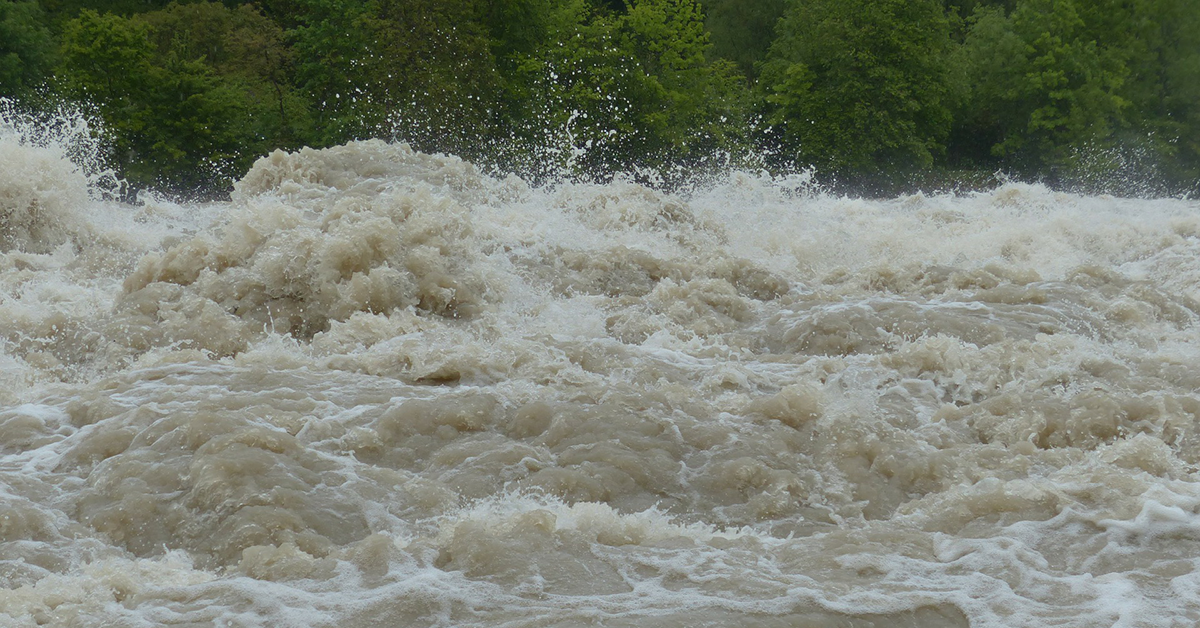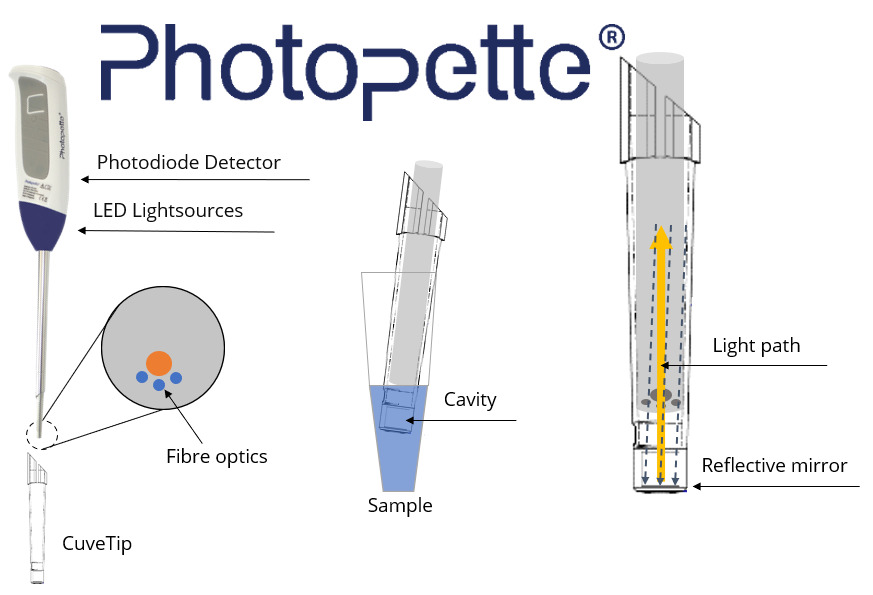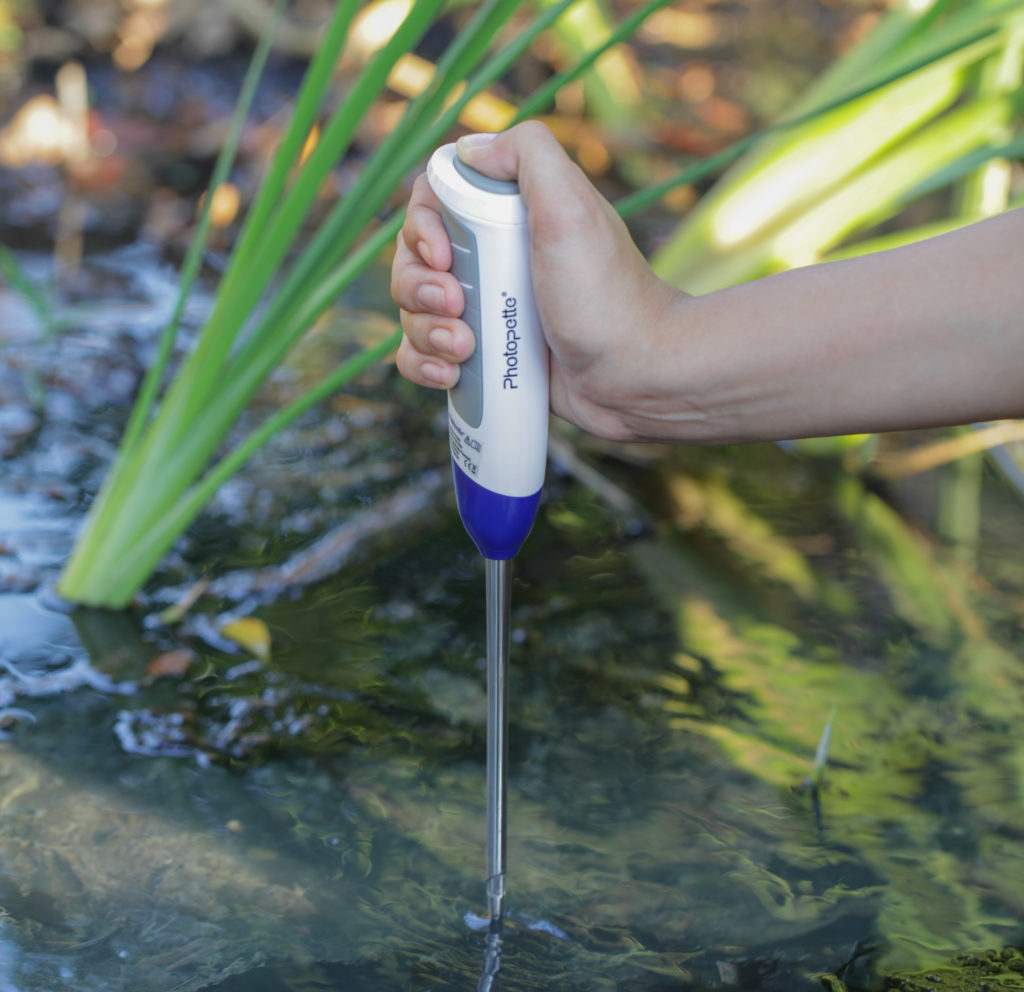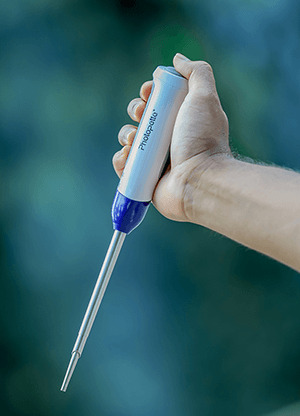Blog
Introduction to Turbidity

What is Turbidity and How is it Measured?
An Introduction to Turbidity
Turbidimetry is an analytical technique that is used to measure the cloudiness or haziness of liquid samples.
For example, consider the differences in water from a tap and water from a muddy river. The water from the tap is colourless and clear, with a very low turbidity. On the other hand, a muddy river is brown and opaque and therefore has a high turbidity.
When we consider these two samples and what makes the water appear so different, we have to consider the suspended solids that affect the clarity of the water. Turbidity is a measure of clarity of a sample, rather than the measure of the amount of dissolved or suspended solids within a sample, which can be caused by inorganic sediment, bacteria or precipitates.
Turbidity is a great indicator of water quality, whether that be regarding the quality of drinking water or the quality of aquatic environments, of which will be covered further in this article.
How is Turbidity Measured?
The way in which turbidity is measured has evolved over time.
The first known measure of turbidity was called the Jackson Candle Method, which used a vertical glass tube over a candle. A sample was poured into the tube until the user could no longer see the distinct image of the candle flame.
The final height of the sample which was added resulted in the corresponding turbidity measurement. Although crude in methodology, it was important to provide the basis of modern turbidity measurements.
Modern day methods for measuring turbidity consist of using turbidimeters, which consists of a fixed light beam, aperture, and detector.
In most modern turbidimeters, a sample is obtained, added to a vial and placed in the instrument. The fixed light beam is then shone in the direction of the sample to measure how much light is transmitted and how much is scattered, by photodetectors set 90-degrees to the sample.
Alternatively, in handheld instruments – such as our Photepette instrument – you take the instrument to the sample. The users put a CuveTip on the device, directly immersing the tip into the sample to take a reading – as demonstrated in the image below:


Modern instruments can determine turbidity in two ways, by the loss of light from the transmitted beam, and the measurement of light scattered onto surrounding detectors.
In the presence of suspended and dissolved solids, light will be scattered, resulting in a detection of light from photodetectors. The higher the concentration of particles or solids, the more light that is scattered, resulting in a higher turbidity measurement.
Measurements using the difference in light intensity from the transmitted beam is typically suitable for samples of high concentrations of solids, or turbidity, whilst light scattering is a suitable method for samples with a low concentration of solids.
The Units of Turbidity
When it comes to measuring and reporting turbidity measurements, you often see results reported in NTU or JTU.
NTU – Nephelometric Turbidity Units – is the common unit used to report measurements from modern turbidity instruments, whereas JTU – Jackson Turbidity Units – are the original units used from the historic Jackson Candle Method described previously.
Today, NTU is the standard unit used to signify an instrument measuring scattered light at a 90-degree angle from the incident light beam.
Other than NTU and JTU, it is possible to come across alternative turbidity units as outlined below:
- FNU – Formazin Nephelometric Units – signifies the measurement of turbidity via light scattering and used when referencing ISO 7027
- FTU – Formazin Turbidity Units – Similar to NTU, but more commonly used when referring to formazin as the primary reference standard
- FAU – Formazin Attenuation Units – signifies the measurement of turbidity via light transmission, typically measured by colorimeters or spectrophotometers.
Because the optical design of the light source, aperture and photodetector are different in different instruments a calibration with a turbidity standard, or NTU standard, is always required.
Causes of Turbidity
In environmental water analysis, there are numerous sources that can contribute to high turbidity measurements, from both natural and human sources. This can include sediment which can be disturbed and suspended; a common event after rainfall.
But other causes of high turbidity include the growth of algae and bacteria, or the release of tannic acids from peats and bogs. These sources can be exacerbated by human activities, such as erosion or pollution.
But turbidity isn’t always a direct correlation with the number of dissolved or suspended solids in a sample. The size, shape and composition of the offending material all have a direct effect on the final turbidity, which can make diagnosing identifying causes of turbidity difficult.
Applications of Turbidity Measurements
Because turbidity is a measure of the clarity of water, it is a useful methodology to determine the ‘quality’ of water in the sample.
Typical drinking water is clear and colourless with a very low – almost zero – turbidity value. Turbidity measurements above the typical value may indicate the presence of bacteria, pathogens or particulates that may not be visible to the naked eye.
Other applications for turbidity measurements include the monitoring of the quality of water in rivers and streams and the impacts on aquatic life, or measuring the turbidity of wastewater effluent to monitor for the presence of harmful pathogens.
Turbidimetric measurements are also applied in the chemical industry, the food and beverage industry and for research purposes in various labs.
FAQs
How do you measure turbidity in water?
Measuring turbidity requires taking a sample from the source and using an instrument to analyze it. Ensure the turbidimeter has been recently calibrated using turbidity calibration standards and take a minimum of two readings
What is a good turbidity level in drinking water?
In Western countries, turbidity levels of drinking water should be below 1 NTU, ideally aiming for an average turbidity measurement of 0.2 NTU or less. In poorer or low resource countries, aiming to keep the turbidity of drinking water below 5 NTU should be the target.
What are the limitations of typical turbidity measurements?
Modern turbidity measurements require obtaining a sample, and then sending it to a lab to complete the measurement. The lab measurement is very accurate. However, the sample transport can cause large errors. During transport, solids may aggregate and sediment causing a decrease in turbidity or algae or bacteria continue to grow causing an increase in turbidity.
Using a solution such as our Photopette® Turbidity Handheld Turbidimeter provides a sampling free workflow to measure directly in the sample; no sample transport is required resulting in a much better accuracy.
It is an ideal solution for environmental monitoring in industries such as wastewater treatment plants or food and beverage.


